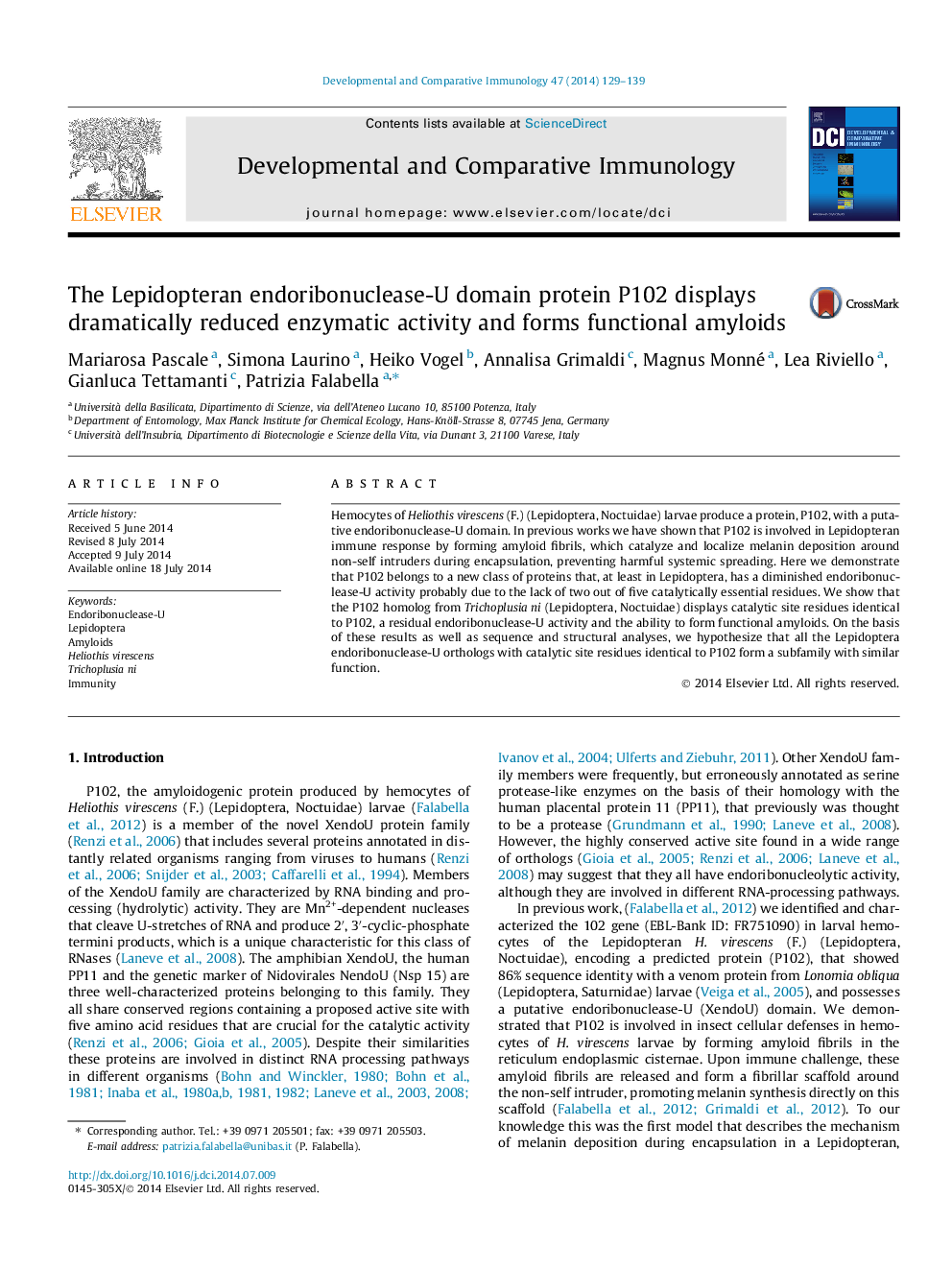| Article ID | Journal | Published Year | Pages | File Type |
|---|---|---|---|---|
| 2429118 | Developmental & Comparative Immunology | 2014 | 11 Pages |
•The hemocytes of Heliothis virescens larvae produce a protein named P102.•P102 has a endoribonuclease-U (XendoU) domain but lacks essential catalytic residues.•P102 lost its original enzymatic activity to produce functional amyloids.•Amyloids formed by P102 are involved in Lepidopteran immune response.•Lepidoptera P102 orthologs form a XendoU subfamily with similar function.
Hemocytes of Heliothis virescens (F.) (Lepidoptera, Noctuidae) larvae produce a protein, P102, with a putative endoribonuclease-U domain. In previous works we have shown that P102 is involved in Lepidopteran immune response by forming amyloid fibrils, which catalyze and localize melanin deposition around non-self intruders during encapsulation, preventing harmful systemic spreading. Here we demonstrate that P102 belongs to a new class of proteins that, at least in Lepidoptera, has a diminished endoribonuclease-U activity probably due to the lack of two out of five catalytically essential residues. We show that the P102 homolog from Trichoplusia ni (Lepidoptera, Noctuidae) displays catalytic site residues identical to P102, a residual endoribonuclease-U activity and the ability to form functional amyloids. On the basis of these results as well as sequence and structural analyses, we hypothesize that all the Lepidoptera endoribonuclease-U orthologs with catalytic site residues identical to P102 form a subfamily with similar function.
Graphical abstractFigure optionsDownload full-size imageDownload high-quality image (164 K)Download as PowerPoint slide
